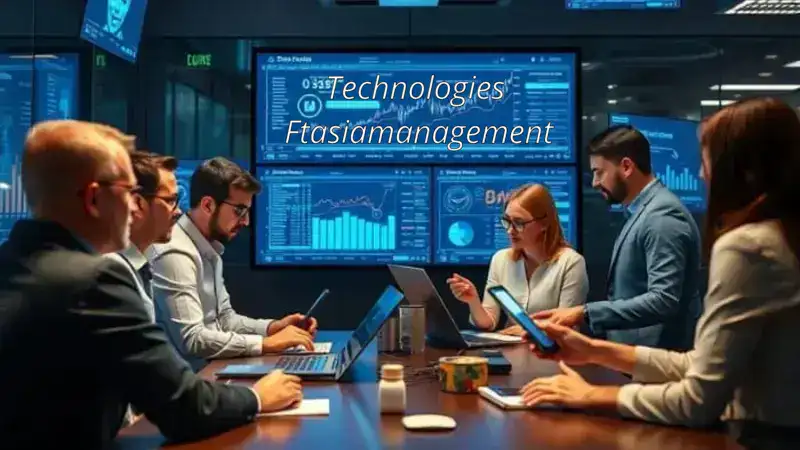Digital transformation is no longer optional—it’s the heartbeat of business growth. Across Asia, industries are turning toward intelligent platforms to increase efficiency, enhance security, and scale rapidly. One name making waves in this space is technologies ftasiamanagement.
But what makes it special? Why are tech leaders and business owners so keen to adopt it? This article takes a deep dive into the platform’s structure, features, use cases, benefits, and future outlook—crafted to give you deeper insights than any competing piece online.
Understanding the Core of Technologies Ftasiamanagement
Technologies ftasiamanagement isn’t a single tool—it’s a comprehensive technology ecosystem that integrates artificial intelligence, cloud computing, blockchain, and automation. It helps organizations optimize business operations, financial systems, and digital workflows under one intelligent umbrella.
Let’s break it down layer by layer.
1. Artificial Intelligence & Machine Learning
AI and ML are at the heart of this platform. They bring automation and foresight into business decision-making.
-
Predictive analytics: Anticipate market shifts and consumer behavior.
-
Personalized insights: Segment customers for precise targeting.
-
Fraud detection: Identify unusual transactions before they become threats.
By leveraging these technologies, businesses can reduce errors, increase accuracy, and operate proactively instead of reactively.
2. Cloud Architecture & Scalability
The platform runs on hybrid cloud infrastructure—public and private clouds working in sync.
-
Scalable infrastructure: Expand or shrink based on your workload.
-
Microservices design: Modular components that evolve independently.
-
Real-time synchronization: Ensures smooth communication across applications.
This structure offers both flexibility and resilience, ensuring uptime, speed, and cost efficiency for businesses of any size.
3. Blockchain & Trust Framework
Blockchain brings transparency and trust to financial and enterprise transactions.
-
Immutable ledgers: Guarantee data accuracy and security.
-
Smart contracts: Automate workflows without third-party intervention.
-
Secure authentication: Reinforce identity management using cryptography.
This combination builds confidence among users, regulators, and partners—especially in fintech and supply chain environments.
4. Enterprise Automation
The real magic of technologies ftasiamanagement lies in its automation capabilities.
-
ERP modules: Finance, HR, and operations in one view.
-
Robotic process automation (RPA): Replaces repetitive manual tasks.
-
Unified dashboards: Provide complete visibility into business health.
Automation accelerates workflows, reduces cost, and eliminates human error—giving leaders more time to focus on strategy.
5. Internet of Things (IoT) & Edge Integration
IoT capabilities extend the platform’s intelligence to physical devices.
-
Sensor-based monitoring: Track assets and equipment in real time.
-
Predictive maintenance: Detect issues before they cause downtime.
-
Smart city systems: Manage utilities, energy, and traffic efficiently.
The integration of IoT transforms industries like logistics, manufacturing, and infrastructure management.
6. Security, Privacy & Compliance
Data is the most valuable asset in modern business. Hence, the platform enforces enterprise-grade security.
-
Zero-trust frameworks: Verify every request, every time.
-
End-to-end encryption: Protects sensitive information in motion and at rest.
-
Regulatory compliance: Aligns with ISO and local privacy regulations.
With cyber threats on the rise, strong data governance is what keeps organizations safe and credible.
Practical Use Cases of Technologies Ftasiamanagement
Fintech & Digital Banking
Financial institutions are using it for:
-
Real-time fraud detection and risk scoring.
-
Automated loan approval systems.
-
Crypto and digital wallet management.
-
AI-driven compliance and reporting.
E-Commerce & Retail
Retailers leverage it for:
-
Personalized shopping experiences.
-
Automated supply chain and order tracking.
-
Dynamic pricing and inventory forecasting.
-
“Buy now, pay later” (BNPL) payment systems.
Corporate Enterprises
For medium and large businesses, the platform offers:
-
Centralized ERP integration.
-
Cross-department collaboration through dashboards.
-
Automated HR and payroll processing.
-
Remote-friendly operations powered by the cloud.
Smart Cities & Infrastructure
Governments and city planners use it for:
-
Traffic flow optimization.
-
Environmental monitoring and waste management.
-
Real-time energy analytics.
-
Public safety systems driven by IoT.
Startups & SMEs
Smaller organizations benefit through:
-
Affordable SaaS deployment.
-
Prebuilt APIs for rapid development.
-
Scalable plans that grow with business demand.
Advantages of Technologies Ftasiamanagement
-
Unified Platform: Combines AI, blockchain, and cloud into one system.
-
Scalability: Adapts easily to business growth.
-
Automation: Reduces costs and human dependency.
-
Security & Trust: Blockchain ensures transparent operations.
-
Regional Optimization: Designed to fit Asia’s financial and regulatory ecosystem.
-
Faster Deployment: Pre-configured modules enable quick setup.
Each of these benefits directly impacts ROI, making the platform attractive to both startups and enterprises.
Challenges to Consider
While powerful, technologies ftasiamanagement isn’t without challenges:
-
Adoption resistance: Teams may hesitate to shift from legacy systems.
-
Data complexity: Poor data quality limits AI accuracy.
-
Cost for small firms: Some advanced modules can be pricey.
-
Regulatory hurdles: Compliance varies across Asian nations.
-
Vendor lock-in risk: Deep ecosystem integration makes migration difficult.
By anticipating these challenges early, companies can develop smarter rollout strategies.
Best Practices for Successful Implementation
-
Start with a pilot: Test one area (e.g., fraud detection) before scaling up.
-
Ensure data quality: Clean and validate data from day one.
-
Use modular deployment: Add or remove components as needed.
-
Train teams: Upskill employees in AI and data literacy.
-
Set measurable KPIs: Define success benchmarks and review regularly.
-
Prioritize compliance: Align with local data protection laws.
-
Maintain agility: Keep architecture flexible to integrate future tech.
Comparison Table: Where It Excels
| Feature | Technologies Ftasiamanagement | Conventional Systems | Standalone Tools |
|---|---|---|---|
| Scope | All-in-one ecosystem | Single function | Narrow focus |
| AI & Automation | Built-in | Add-on | Minimal |
| Scalability | Cloud & hybrid ready | Limited | Varies |
| Security | Blockchain-backed | Standard encryption | Basic |
| Localization | Asia-focused | Generic | Variable |
| Speed to Deploy | Rapid | Slow | Medium |
Future of Technologies Ftasiamanagement
-
Generative AI Integration: Expect autonomous code generation, decision systems, and advanced analytics.
-
Vertical Customization: Dedicated solutions for healthcare, education, and logistics.
-
Interoperability Growth: Open APIs will enable cross-platform connectivity.
-
Regional Expansion: From Asia to Europe and the Middle East.
-
Sustainability Modules: Tools for carbon tracking and eco-efficiency.
-
Decentralized Identity: Stronger control over data ownership and privacy.
These innovations will redefine how businesses operate over the next decade.
Conclusion
Technologies ftasiamanagement symbolizes the next frontier of intelligent business operations—merging AI, automation, and security into one seamless platform. It empowers organizations to think smarter, act faster, and scale stronger. Click here for more information.
However, success isn’t about technology alone. It’s about implementation—clear goals, clean data, and well-trained teams. Businesses that approach adoption strategically will lead Asia’s next digital revolution.


